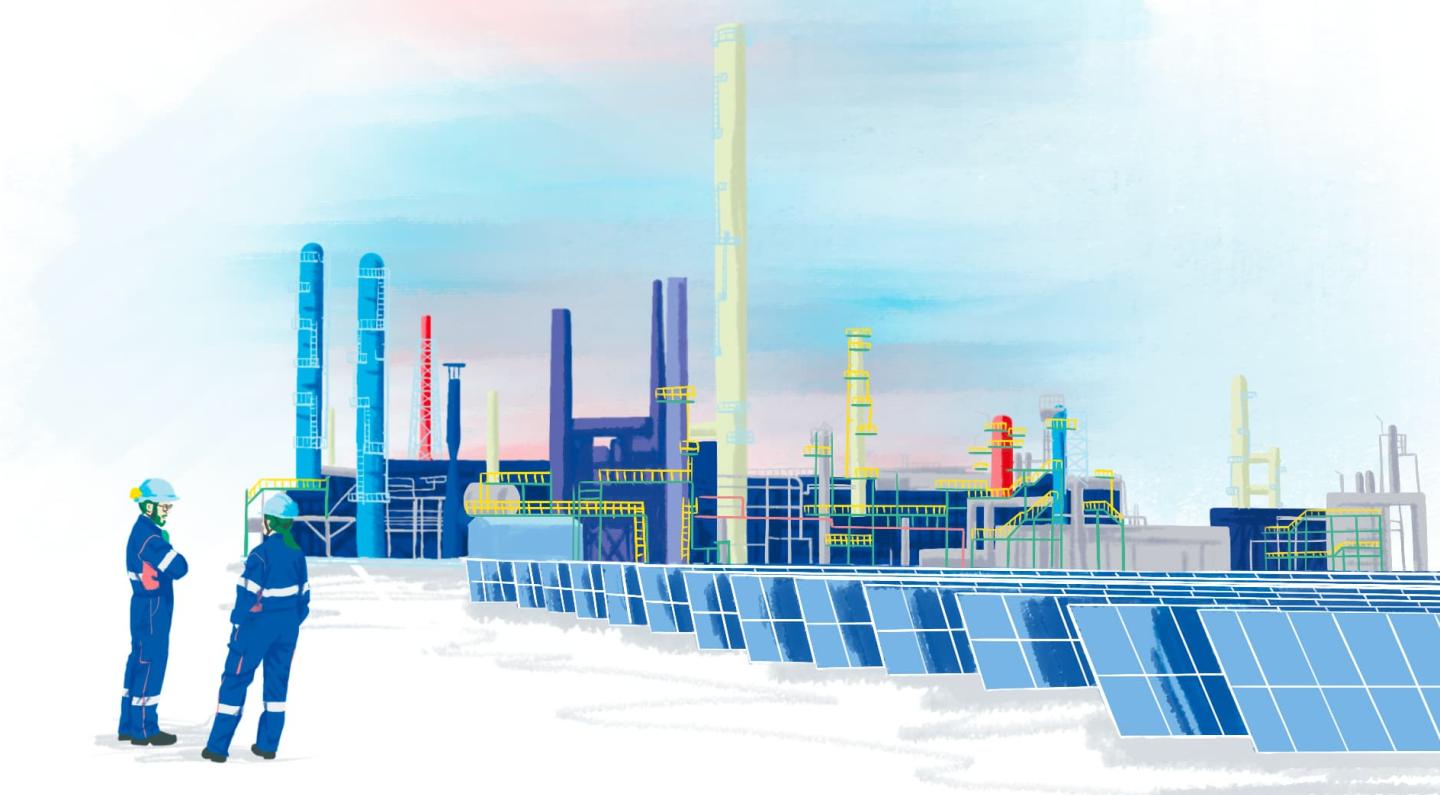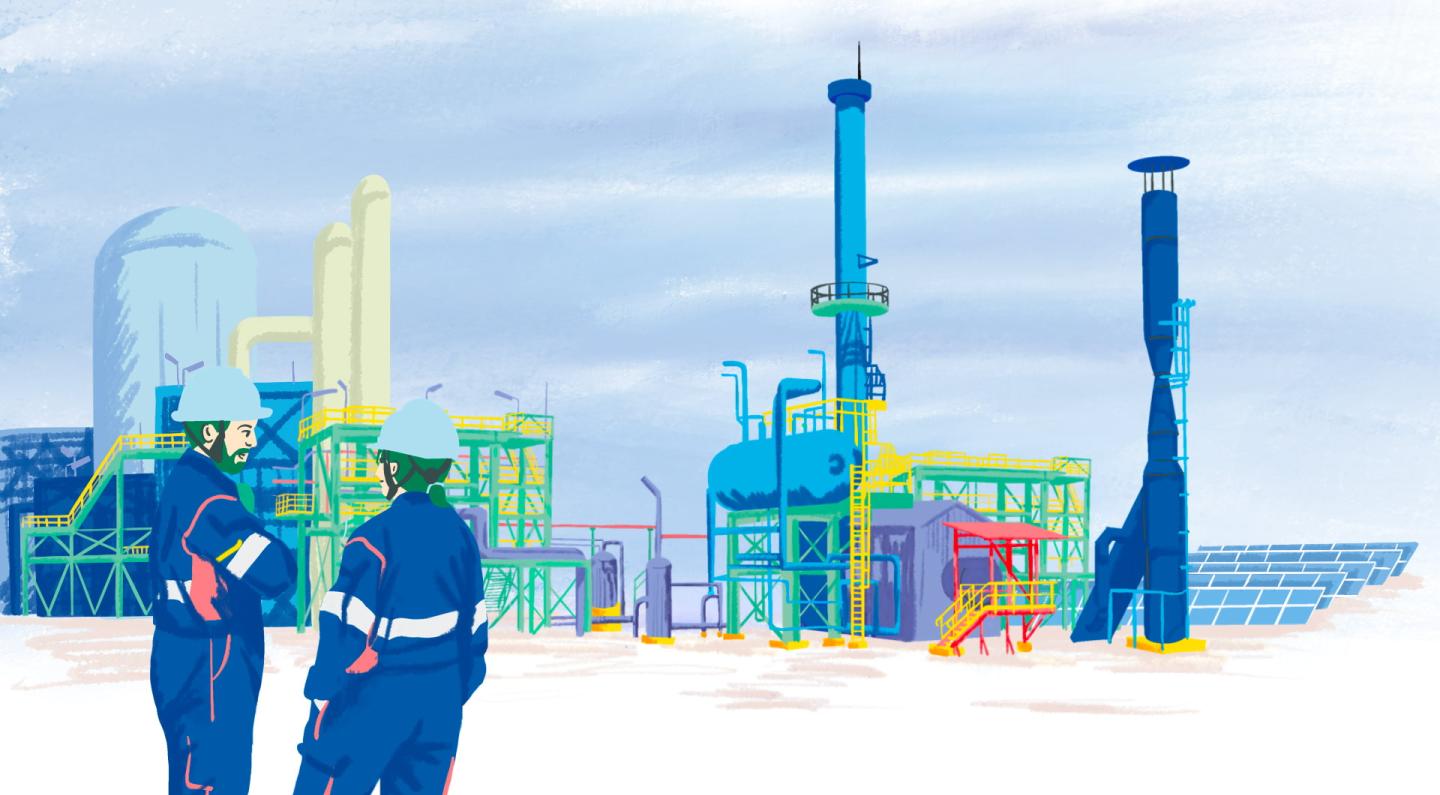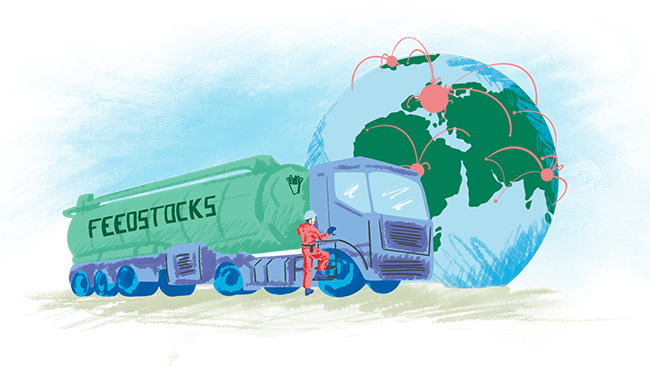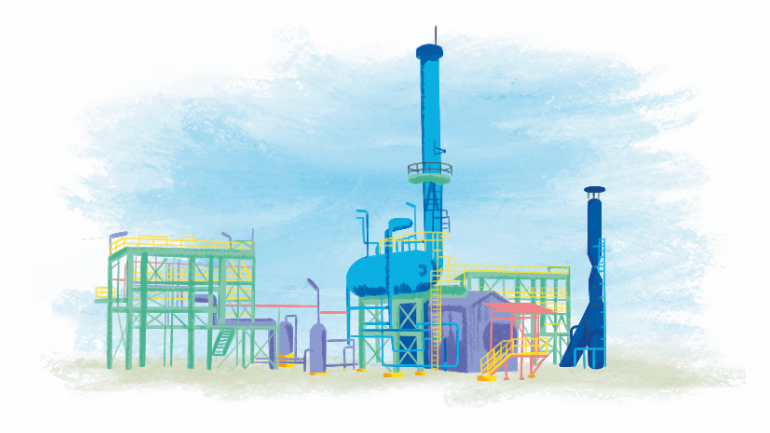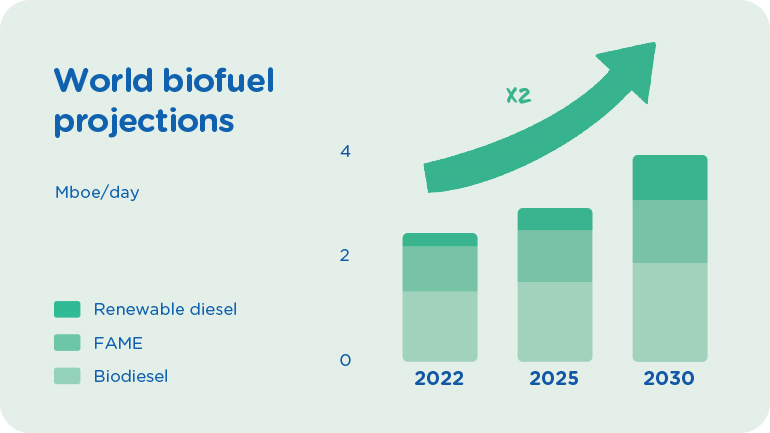TotalEnergies and Biofuels: The Adventure Begins
TotalEnergies and Biofuels
The Adventure Begins
Have you heard of biofuels? They are fuels produced from organic matter, generally waste generated by the circular economy (used cooking oils, animal fat, etc.). Biofuels have the advantage of a better carbon footprint* than traditional fuels. An essential solution to help decarbonize the transport sector!
* A reduction of at least 50% in greenhouse gas emissions compared to the fossil equivalent, according to a lifecycle analysis methodology described in the RED II EU Directive. EU Directive No.2018/2001 on renewable energy sets out the exact method used to calculate the greenhouse gas emissions linked to the production and use of biofuels and establishes the value of the fossil equivalent.
The essentials of biofuels
Three generations of biofuel
First-generation biofuels
They are made of:
- vegetable oils, such as sunflower or rapeseed oil;
- sugars and starches from crops such as sugar beet, sugarcane, maize or wheat.
Today, 97% of the biofuels produced worldwide are first-generation. These feedstocks are in direct competition with the food sector. TotalEnergies aims to phase out vegetable oil feedstocks by 2030.
Advanced biofuels
Advanced biofuels are produced from wastes and residues such as animal fats and used cooking oils, which were previously burned or discarded, but are now recovered and used to produce fuel.
We are actively investing in second generation feedstocks.
Third-generation biofuels
The third-generation explores new potential by examining additional types of biomass. It still presents a large number of technological and economic challenges.
Our R&D is working on solutions.
A feedstock for every purpose
The raw materials, or feedstocks, are selected according to the finished product:
- Ethanol produced by the fermentation of sugar in sugar beet or cereals is used to produce biofuels for the gasoline market. TotalEnergies has been distributing this kind of biofuel since 1994.
- Oilseed crops such as rapeseed and sunflower, used cooking oils and animal fat are used to produce biofuels for the diesel market. We decided to invest in this market in 2019, when we started producing renewable diesel.
At TotalEnergies, we prefer to produce biofuels from waste and residues generated by the local economy.
- Used cooking oil: the global potential for used cooking oils is around 15 million tons a year. Collection circuits are gradually being set up to recover these used materials from food processing plants and restaurants, especially fast food outlets.
- Animal fat: recycled animal fat comes from suppliers at rendering plants and abattoirs. They are subject to strict health controls. The global resource is around 10 million tons a year, with Europe alone providing just under 3 million tons.
Until very recently, waste and residues had no value. Today, they constitute the majority of our feedstock and have to meet strict specifications from TotalEnergies as to traceabilty. But they are a very widely dispersed resource! The process of organizing their collection is underway, in response to constantly growing demand(driven by regulation) from biofuels producers, but it takes time. Hélène Labesse Renewable Fuels Business Unit Optimization Manager Refining & Chemicals Business Segment, TotalEnergies
How are our biofuels produced?
From the frying pan to the engine, discover the journey of our raw materials through a biorefinery like the one at La Mède in France.
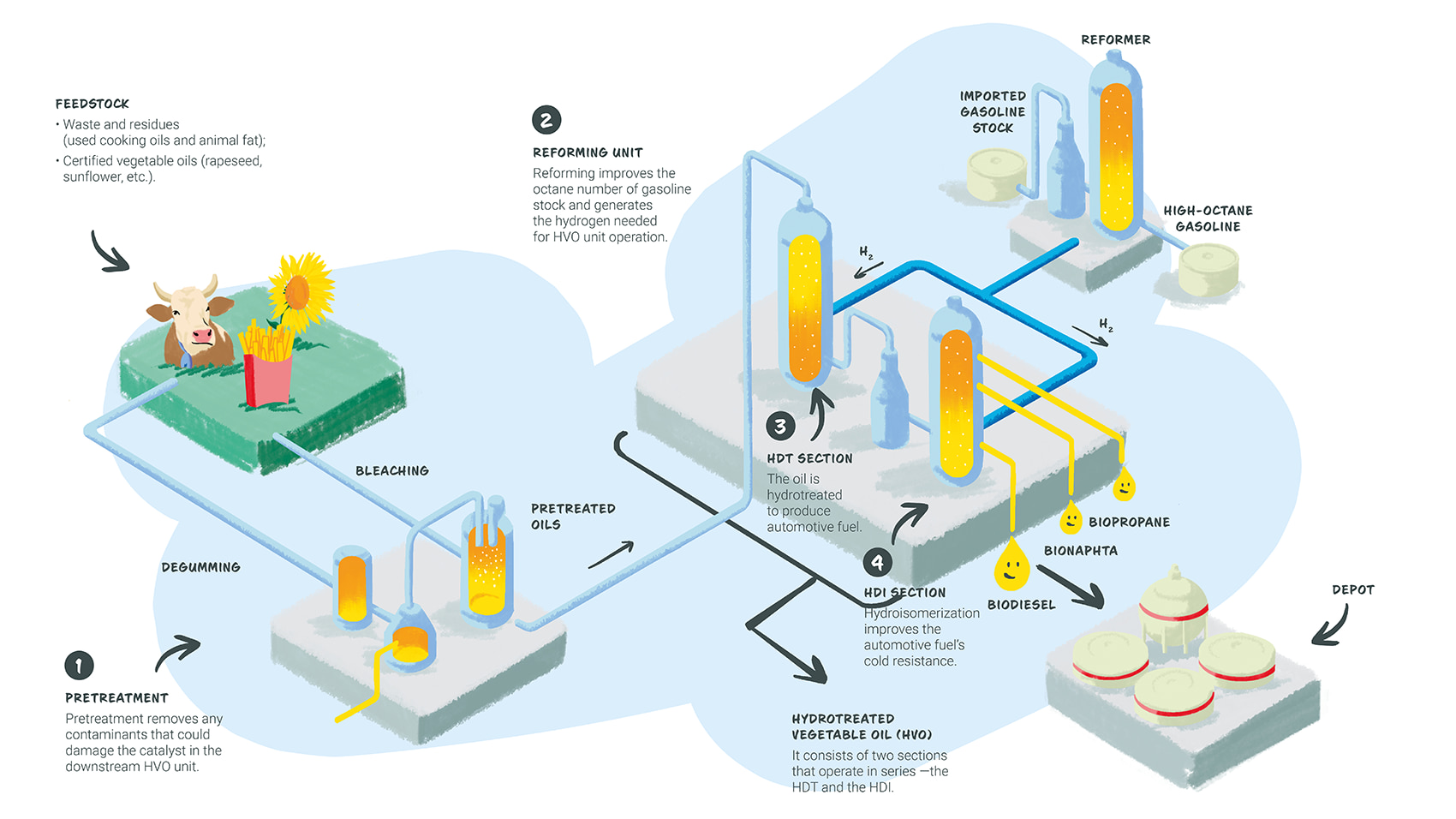
In addition to biorefining, there is another model for the production of biofuels in traditional refineries: co‑processing. Co-processing is the term used for the incorporation of biomass feedstock alongside the standard fossil feedstock, in a standard refinery. The refining process results in a sustainable aviation fuel.
Biofuels: a market built by regulation
It currently costs more to produce biofuels than fossil fuels. So the price to our customers is higher, and that reduces demand. For the market to grow and be profitable, governments need to intervene through regulation.
It’s counterintuitive, but regulation is helping to drive biofuels: demand is growing because of the regulations. Biofuels are generally found in countries where regulations encourage their use. The percentage of biofuel in a product depends on regulations and fuel specifications, and consequently, so does the amount produced.Nicolas Rouquette Head of Economics Department La Mède Platform – France Refining & Chemicals Business Segment
Sustainable aviation fuel: taking off for the future
SAF: the fuel that decarbonizes aviation
Aviation biofuel is one part of TotalEnergies’ net zero ambition, and allows us to help our customers achieve their own targets for CO2 emissions reductions. It is blended into fossil jet fuel in various proportions in order to reduce greenhouse gas emissions by comparison with a standard aviation fuel. So it’s a concrete alternative to fossil jet fuel, it’s available today and it satisfies sustainability criteria.
Today, SAF is the most immediate solution for reducing CO2 emissions from air transport. In its current commercial offering, this fuel is considered “ready-to-use”, meaning that it requires no modification to engines, aircraft or ground infrastructure. The airline industry has realized the opportunity represented by this solution, which has no real economic or technological alternative currently available.Antoine Jaegle Director of Strategy, Climate and Aviation Development Marketing & Services Business Segment, TotalEnergies
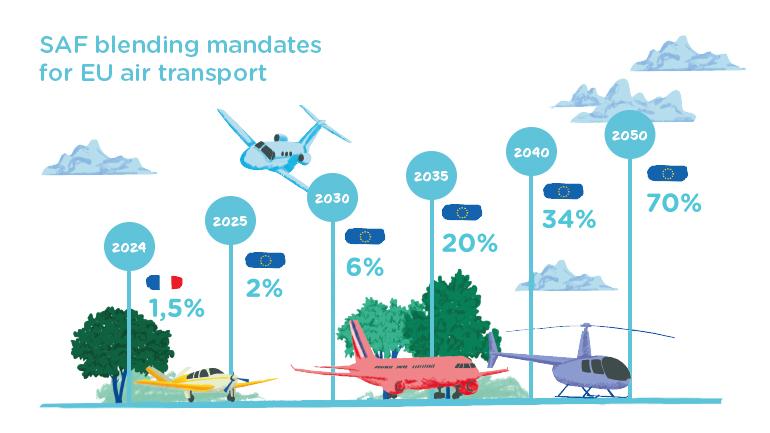
SAF blending mandates for EU air transport
Trend in the proportion of SAF molecules incorporated into European air transport between 2024 and 2050:
- 2024: 1.5% (in France)
- 2025: 2%
- 2030: 6%
- 2035: 20%
- 2040: 34%
- 2050: 70%
Sustainable aviation fuel (SAF) currently costs 4 to 6 times as much as fossil jet fuel. But the SAF market is growing as the EU and other global authorities adopt blending mandates. There is also demand from the private sector (industry, business aviation, airlines, etc.), with businesses looking to achieve their net zero goals. However this is a market starting from scratch!
TotalEnergies and SAF
TotalEnergies’ sustainable aviation fuel is a mixture of biofuels produced from waste and residues generated by the circular economy (animal fat, used cooking oils, etc.) and JET A-1. The advantage of SAF is that it can be blended into jet fuel at a level of up to 50% depending on how it was produced, without requiring any changes to the existing logistics, infrastructure, aircraft or engines, while ensuring the same safety and product quality.
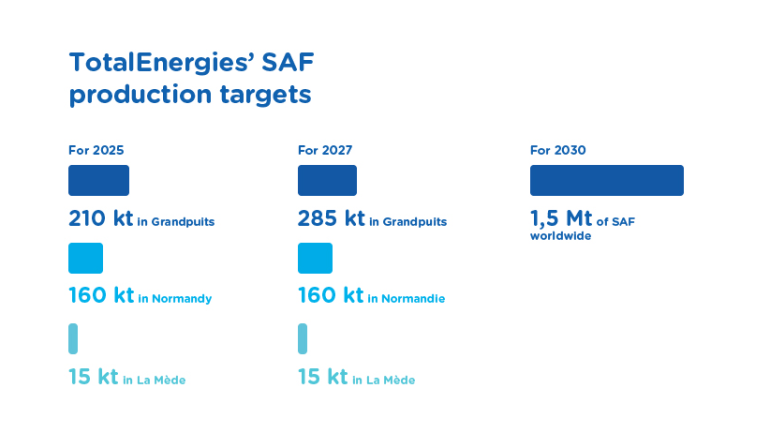
TotalEnergies' annual SAF production targets
- 2025:
- Grandpuits: 210,000 tons
- Normandy: 160,000 tons
- La Mède: 15,000 tons
- 2027:
- Grandpuits: 285,000 tons
- Normandy: 160,000 tons
- La Mède: 15,000 tons
- 2030: 1.5 million tons of SAF worldwide
Our zero-crude platform of Grandpuits is at the heart of our SAF production: with the site’s annual production capacity reaching 210,000 tons by 2025, and increasing to 285,000 tons by 2027, the Grandpuits biorefinery will help to meet demand driven by the rising EU blending mandates, set at 6% in 2030.




